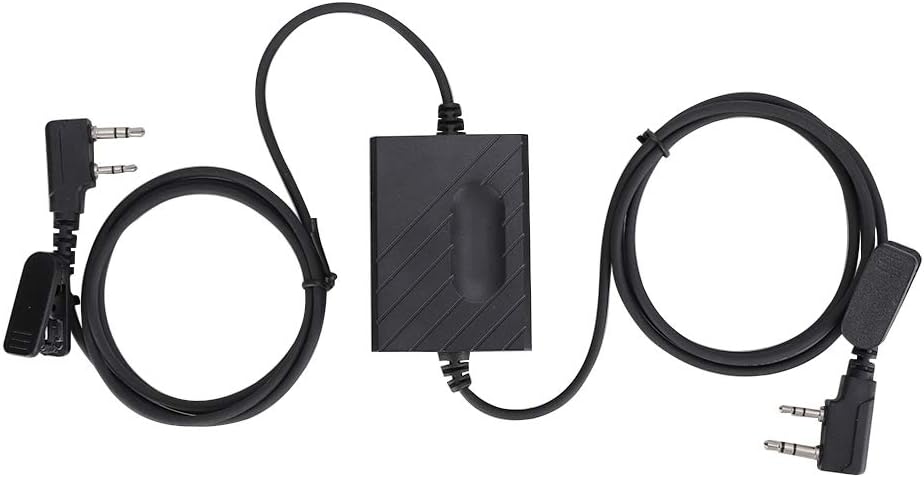The K-Head Repeater Box (often listed as RPT-2K by Tosuny) is a tiny controller that links two handheld radios via the Kenwood-style “K” 2-pin mic/speaker jacks to create a simple, low-cost “repeater.” It’s marketed as plug-and-play with no external power, “two-way forwarding,” audio-VOX based keying, and ~35-inch leads on both sides. The listing even tells you to turn the receive radio’s volume to max because it keys on audio, not proper COS/COR.
Amazon Listing: https://amzn.to/464Q5QH
What sets it apart is the simplicity and price: for around $24 you’re promised an ultra-light, cable-style relay that should work with Baofeng UV-5R / DM-5R / GT-3TP and other K-plug HTs. There’s no power brick, no configuration menu, just two cables and go. On paper, that’s perfect for a quick hilltop drop to punch out of my valley.
Why I Bought It
I live down in a valley between two large hills, but I own the big hill behind me. A small, throw-together hilltop relay using a couple unused Baofengs sounded ideal: hike up, plug in, and extend my range back home. I didn’t need bells and whistles—just RX on one radio, TX on the other.
Build & First Impressions
For the price, it’s built well enough. The cables are generously long (plenty of slack to separate the radios a bit). The labeling has broken English and typos, which won’t matter if it works—but it didn’t inspire confidence.
Real-World Test: The Fatal Problem
The moment I keyed a third radio to bring up the link, both connected radios went into transmit—simultaneously. They latched in a TX-TX loop and wouldn’t recover until I unplugged both sides of the box. I tried:
- moving the radios farther apart
- swapping antennas
- swapping radios (different Baofengs)
Same result every time: TX lockup.
Verdict
I wanted a $24 miracle; I got a TX-lockup machine. The long leads and no-power simplicity are nice on paper, and the build is “okay for the price,” but audio-mode VOX linking bit me hard. After multiple antennas, radio swaps, and separation attempts, both radios still latched in transmit until unplugged.
What I liked
- Very cheap and lightweight
- Long cables make radio placement flexible
- Truly plug-and-play (no power, no menus)
What I didn’t like
- Reliability: Repeated TX-TX lockups—unusable in the field
- Audio-VOX design is intrinsically fragile for duplex links
- Rough labeling/English and sparse documentation
- No ID, no proper control logic, not confidence-inspiring for unattended use
Bottom line: Not recommended. If you’re trying to get a signal out of a valley with a cheap hilltop solution, skip this cable box and spend a little more on a Surecom SR-628 (duplex).

Leave a Reply